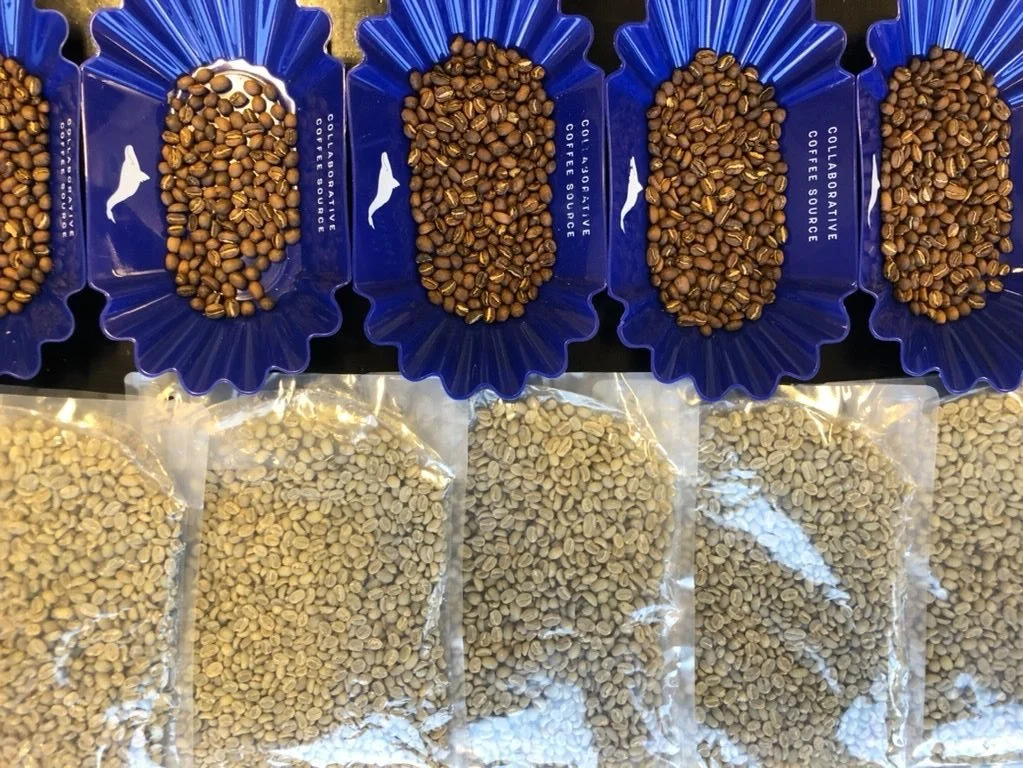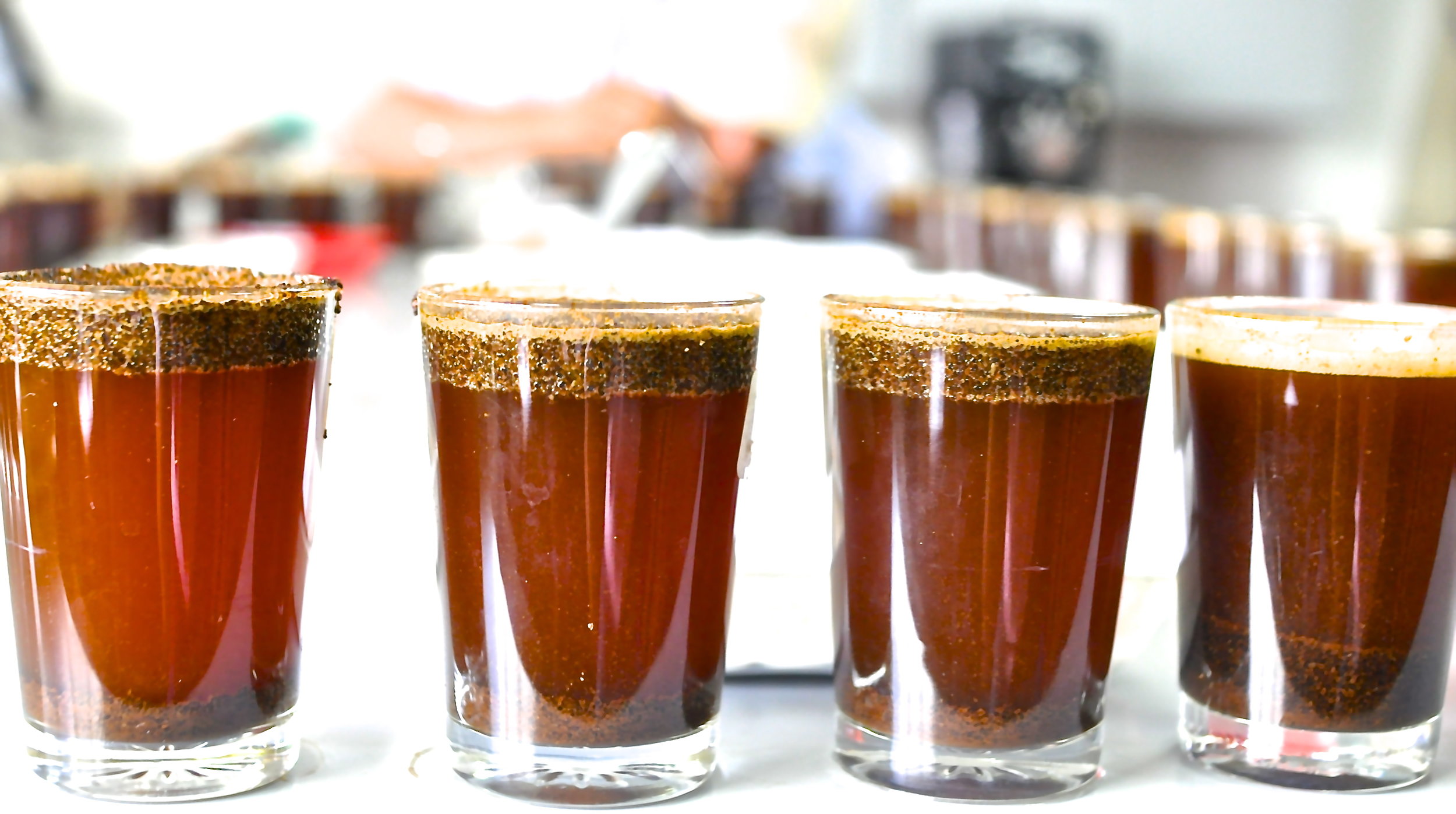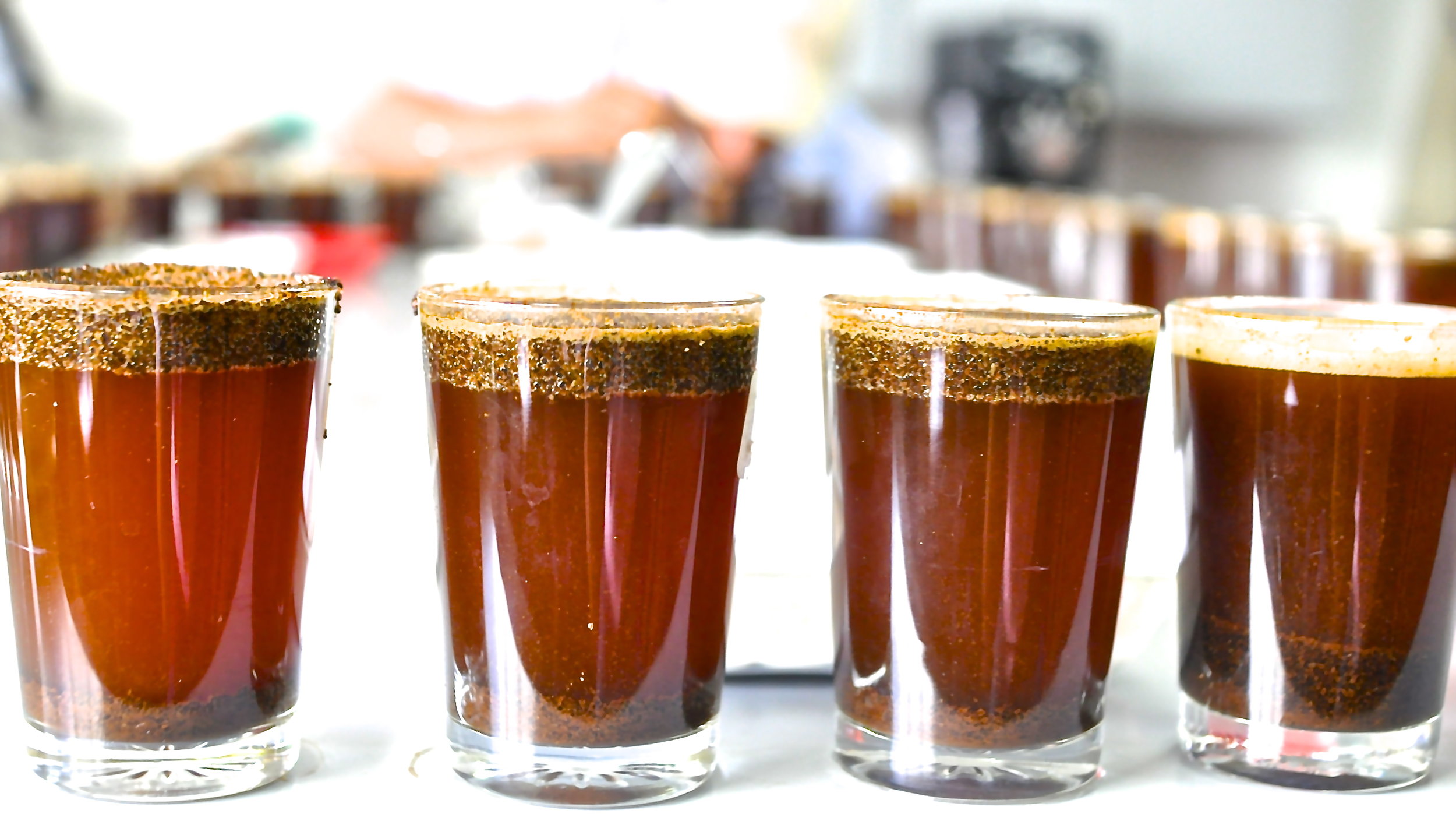 ´The future has arrived!´ exclaims Jeremy as Robert´s face looms into view across cyberspace: from a cupping lab in downtown Oslo to projection onto a brick wall in buzzing early-evening east London. The party has assembled, ready to cup six of the best samples Honduras has to offer, a classic Costa Rica and an unparalleled Panama Geisha.
´The future has arrived!´ exclaims Jeremy as Robert´s face looms into view across cyberspace: from a cupping lab in downtown Oslo to projection onto a brick wall in buzzing early-evening east London. The party has assembled, ready to cup six of the best samples Honduras has to offer, a classic Costa Rica and an unparalleled Panama Geisha.
The Line Up:
Honduras, Santa Barbara region
1) Oscar Tinoco HICAFE 90/Catimor
2) Don Amado Yellow Catuaí
3) Danny Moreno Pacas
4) Jesus Moreno Pacas
5) Neptaly Bautista Pacas
6) Eulogio Martinez Pacamara
COSTA RICA, Tarrazu region:
7) Don Mayo. La Loma farm, lot march12th Caturra
PANAMA, Boquete region:
8) Hacienda Esmeralda Geisha
Robert introduces us to the coffees one by one, the history of the farm, the successes and challenges of the farmer, the varietal, the terroir, the journey of the beans in each cup.
The Honduras line up is immensely varied considering the proximity of the farms to one another. Although some are from different micro regions, many are from adjoining family farms, and all hail from the broad, lush hillside of Santa Barbara.
We start with Oscar Tinoco, who has won Cup of Exellence, but struggled with consistency. We know he has the quality, we have seen it. And we keep working with him, following his investments in farming and equipment, in the knowledge that there is so much unlocked potential. This sample is full bodied and clean, but there is a briney tang to the cup we had not anticipated. But this savory characteristic is distinctive, and while not as floral as that of his neighbours, this coffee has its own character, not to be overlooked.
We proceed to the much loved (excuse the pun) Don Amado. This is the only yellow Catuaí on the table. Seen widely across Brazil, most of central America does not favour this varietal above others. Fresh, clean, crisp, delightfully well balanced with honey, toffee and milk chocolate. Not for nothing is it extremely difficult to get hold of this coffee. This farm has world reknown, and we are lucky to has this coffee.
We proceed to Danny Moreno, whose crisp, clean and well-balanced coffee establishes the theme of the Honduras for this year. A mild burnt sugar finish, improving on cooling, bright acidty with enough supporting body to balance out the cup.
His brother Jesus overshadows him on this table however (well he ought to, with a name like that). Here we have all the clean, fresh, balanced attributes of Danny´s coffee, but there is an intensity, and a fuller mouth feel which starts to introduce the quality we have come to expect from this region. Dried fruits mix with caramel and plums, blackcurrants and dark chocolate. The liquid level rapidly depreciates in the glasses; people nod earnestly while re-dipping spoons.
Neptali Bautista does us proud. This coffee is juicy and round. Full bodied and bursting with fruits and that burnt caramel finish again. People like this coffee. Some cuppers site this sample as their favourite and it´s easy to see why. The complexity of this coffee gives it an edge, and has the power to render its excellent neighbours less interesting.
The name of Eulogio Martinez´ farm is Los Yoyos, which makes me like the coffee before we´ve even started. It good: consistent, well balanced and bright. But most saliently, it has a beautiful aura of coffee flower. Not the hefty intensity of his neighbor on the table, but a delightfully delicate contrast.
Today Don Mayo does not live up to the quality we know and love. We think the roast was off and the beans are underdeveloped. We examine them. A slight shade too pale perhaps, 30 seconds more would have done it. This is an excellent lot and the man is internationally acclaimed, so we are sad not to be able to do justice to the product of his toils.
And now for Geisha! Where to start? Before we reveal what the coffees are, one cupper asks ´what is this coffee? This is not like any coffee I have ever tasted before´. I nod, and a knowing smile escapes from the corner of my mouth. Hacienda Esmeralda have been pioneering the Geisha varietal in the area for years, cultivating the little known variety against the advice of their neighbours, and with outstanding results. We don´t know why the varietal is called Geisha, but its pretty apt. I imagine an early explorer, a botanist: notebook in hand, braces, linen shirt and Panama hat. Cupping the coffee for the first time he wonders how to capture all the attributes in one name: beautiful, exotic, floral, demure, accomplished, different from ordinary coffee - Geisha!
From Central America to Oslo, from Oslo to London; these coffees have travelled the world to reach us. From our friends on the hillsides to the land of the midnight sun, and onwards to Clerkenwell of all places. What a long old journey for such a little bean. And who came to join our party? Cuppers from down-the-road and round-the-corner, from Poland, from France, from Japan, from America. A veritable United Nations of Cuppers it was.
We had a thoroughly enjoyable evening, and will be back again for more.
- Jo
*ok so it was only really international, but skype was involved, which made it kind of exciting...
















